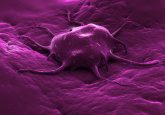Raman spectroscopy may be useful in detecting early tooth decay
New Raman imaging system may lead to better treatment options for preventing tooth decay.
Researchers from the Case Western Reserve University School of Dental Medicine (OH, USA) have proposed the application of Raman spectroscopy in detecting dental cavities.
Detecting the signs of early tooth decay is vital to preventing painful infections and loss of teeth, yet current methods, such as visual inspection and x-ray imaging, are not overly reliable.
Raman spectroscopy is commonly used to assess the mineral content of bodily tissues as it is very sensitive to mineral crystals. Due to the lengthy data acquisition time associated with classical, point-scan Raman mapping, the team decided to investigate wide-field Raman imaging, which was deemed more clinically feasible.
The group, led by Ozan Akkus, assembled a Raman imaging system based on a high-sensitivity 2D charge-coupled device camera for imaging the mineralization status of teeth with lesions. Areas of low and high mineral content were identified as weak and intense Raman signals, respectively, in a process that was found to be 13-times faster than previously used Raman methods. The team reported that the observations of wide-field Raman imaging were in agreement with point-scan Raman mapping, therefore indicating that enamel and lesions can be discriminated by Raman imaging of the mineral content.
Jemma Kerns, a Raman spectroscopy expert at University College London (UK), commented that the device has significance as it could potentially ‘allow for the development of better treatment options to directly benefit patients in the future.’
The team now plans to increase the area that they can image and reduce the cost of the procedure in order to translate this concept into practice.
Sources: Yang S, Li B, Akkus A, Akkus O, Lang L. Wide-field Raman imaging of dental lesions. Analyst DOI:10.1039/C4AN00164H (2014) (Epub ahead of print); Raman bites into tooth decay.




